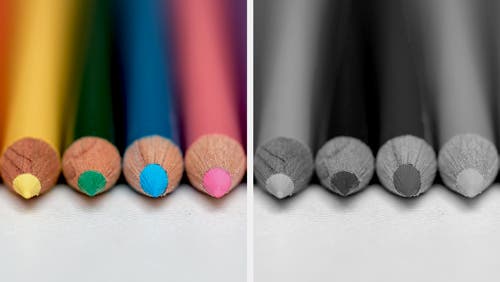A tiny fraction of the population suffers from complete color blindness that renders them unable to distinguish otherwise vibrant colors. Now, doctors in Germany have run a trial with an experimental gene therapy that aims to correct the rare condition.

Achromatopsia, or complete color blindness, is a condition characterized by the total absence of color vision. This is due to defects in the cone cells — specialized light receptors in the retina that are responsible for both daylight and color vision.
Those who suffer from achromatopsia can only see in black, white, and shades of grey. What’s more, such patients can also suffer from other problems with vision, including increased sensitivity to light and glare (photophobia), involuntary back-and-forth eye movements (nystagmus), and significantly reduced sharpness of vision (low visual acuity).
Around one-third of all cases of achromatopsia are caused by a mutation in the GNGA3 gene. This was the target of a novel gene therapy developed by the Institute for Ophthalmic Research at the University Hospitals in Tübingen and the Departments of Pharmacy and Ophthalmology at Ludwig Maximilian University of Munich (LMU).

The therapy involves inserting the CNGA3 gene directly into a patient’s retina using a harmless adenovirus.
Weeks after the functional version of the gene is introduced in the target site, its expression starts producing proteins that should restore the function of the defective cones.
The researchers tried the therapy with nine achromatopsia patients aged 24 to 59 years.
“The experimental subjects suffered no drug-related health problems as a result, nor did their retinas show any permanent changes,” says Professor Dominik Fischer, who headed the clinical study.
No evidence of a cure but the study’s primary objective was a success
There was no clear positive effect in terms of the therapy’s efficacy. Although vision improved somewhat, both in terms of focus and in relation to color vision, the therapy cannot be considered by any means a ‘cure’.
However, curing the condition was not the aim of this study. Instead, the researchers’ immediate goal was to establish safety.
“The study is an important first step. It represents a milestone on the road to a curative therapy of achromatopsia, and we expect even better treatment success in the future,” said Professor Bernd Wissinger from the Tübingen Research Center for Ophthalmology.
According to the researchers, the regions of the brain responsible for processing vision lose plasticity in adulthood. Seeing how the brain of people with achromatopsia has never learned to process color information, they might not be able to see colors despite having improved cone functions. In other words, the software isn’t compatible with the hardware.
Now that the treatment is deemed safe, the researchers plan on repeating the trial with patients who are still children, whose brain plasticity and retinal tissue hasn’t suffered as much damage as adult patients.
“Since the gene vectors used have proven to be safe, a follow-up study in pediatric CNGA3 patients is possible and useful,” says Stylianos Michalakis from the Department of Ophthalmology at LMU.
The findings appeared in the journal JAMA Ophthalmology.









